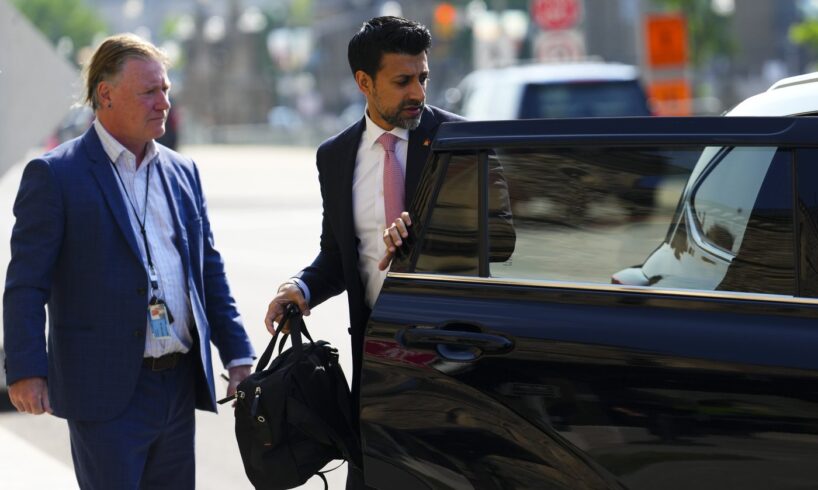
International Trade Minister Maninder Sidhu said he’s witnessed a sea change in interest for Canadian exports headed outside the United States amid the ongoing tariff war with the U.S.
Sidhu told The Canadian Press that in more than a decade working in the private sector as a customs broker, the focus for private firms was always getting goods into the U.S., and the risks were always unfamiliar regulations in far-flung foreign markets. Not anymore.
“Now, businesses are coming to the government and saying, ‘We need help. We want to get into overseas markets.’ Things have shifted dramatically,” he said. “We’re in a different world now.”
Canada has struggled in the past to diversify beyond the U.S., with the share of exports to heading south of the border consistently pushing past 70 per cent for decades.
Prime Minister Mark Carney is setting out to buck the trend, with a stated goal of doubling non-U.S. exports by $300 billion in the wake of Trump’s trade war. To hit the ambitious target, Canada has to rapidly build up its infrastructure.
Sidhu said one key to that push will be Ottawa’s new $5-billion “trade diversification corridors” fund, which the government touts as a way to grease the economy’s wheels by boosting commercial transport facilities and export capacity. Ottawa is also establishing a $1-billion Arctic infrastructure fund for projects that can enable national defence and help the civilian population at the same time.
“Currently, we have enough capacity to get us through the next few years, but eventually, you’re going to come to the point where you’re not going to be able to get the $300-billion target without capacity,” Sidhu said, adding he’s hearing from CEOs, boards of trade and chambers of commerce that Canada desperately needs more trade capacity.
Sidhu and Transport Minister Steven MacKinnon stopped at a CN Rail intermodal terminal in Brampton on Friday. The terminal, part of Sidhu’s riding of Brampton East, is an inland transportation hub where billions’ worth of trade transit through each year.
The pair was set to meet with CN company brass during the trip, part of the post-budget roadshow where the government seeks to promote its newest fiscal priorities.
MacKinnon, for instance, has been travelling throughout Quebec, including the Îles-de-la-Madeleine, ports in Quebec City and Trois-Rivières and Montreal. He will soon be headed out west.
“I can tell you there is a ton of interest out there,” MacKinnon said of the $6-billion funding pool, adding the government’s next step will be to set out criteria and open up “the window for proposals” sometime in the next few weeks.
“We’re going to be building trade-enabling infrastructure all over the country over the next seven years,” he said.
Ottawa is not yet ready to talk about what sectors, regions or markets it’s prioritizing as it looks to reach further beyond its biggest trading partner. Sidhu said he will have more to say once the Liberal government releases its new trade-diversification strategy, which he said is “coming very soon.”
But the 2025 budget itself offers some hints at the kinds of transportation projects Ottawa is eyeing to supply with funding.
“For example, the government will consider investments in key projects in the Great Lakes-St. Lawrence Region, at ports in northeastern Quebec like enhancing the Port of Saguenay’s capacity to build a second wharf, rail lines in Alberta, port and rail infrastructure on the West Coast,” the fiscal plan states.





